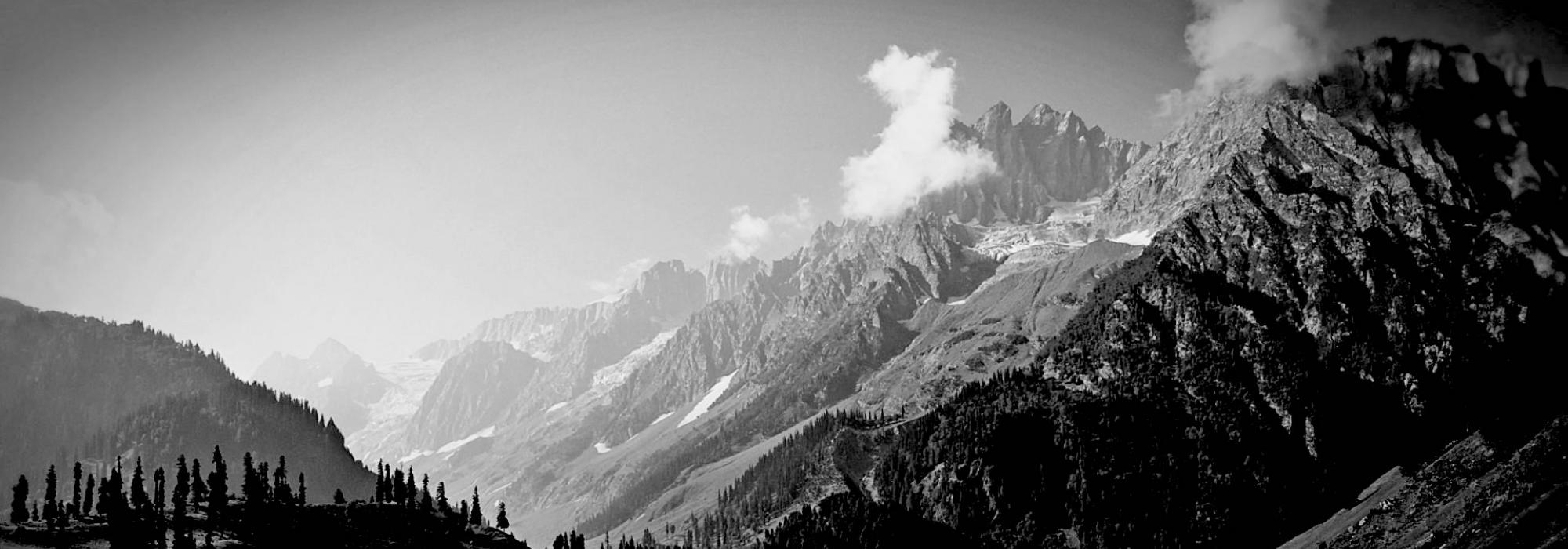We saw in the previous Bhāgavata śloka a mention of two birds in the primordial tree - dvikhago hyādivṛkṣaḥ. When there is a tree, there is usually a bird in it. The metaphor of the two birds comes to us again from the Veda. The Muṇḍakopaniṣad describes the two birds of the saṃsāra tree thus.
dvā suparṇā sayujā sakhāyā samānaṃ vṛkṣaṃ pariṣasvajāte ||
Muṇḍakopaniṣad 3.1.1
The mention of these two birds is seen elsewhere in the Vedas as well. Two birds; from afar they appear identical. However, their inner characteristics are entirely different. Their external looks are the same. Sayujā (appearing similar). Who are those two birds? Bhagavān says that here.
dvāv imau puruṣau loke kṣaraścākṣara eva ca
kṣaraḥ sarvāṇi bhūtāni kūṭastho’kṣara ucyate ||uttamaḥ puruṣastvanyaḥ paramātmetyudāhṛtaḥ
yo loka-trayam-āviśya bibhartyavyaya īśvaraḥ ||BG 15.16-17
- Kṣara refers to the jīva. It means something that is perishable. Bearing a body that is perishable, performing works good and bad, enjoying their desirable and undesirable results, lamenting frequently, crying with joy, adventuring exuberantly - the jīva is a fragment of the Universal consciousness. It is kṣara - something that can be eroded and exhausted. Though it exists momentarily, it is eventually cast off. The ātmā that exists in this temporary changing state is the jīvatmā. It is a sentience that has entered the insentient. The jīva-consciousness that permeates and animates the body’s limbs, sense organs, manas, buddhi and ahaṅkāra is known as kṣara.
- Akṣara is the unattached state of the same universal consciousness. It is the indestructible consciousness latent in the destructible body and is therefore known as kūṭastha (unchangeable). The kṣara can act only because of the presence of the akṣara. As the basis of the kṣara, the akṣara is beyond the kṣara-jīva’s experiences of puṇya and pāpa and is a changeless witness known as the sūtrātmā (the Self that is the common thread in all jīvas). It is also known as the kūṭātmā (the chief Self). The self that is embodied in the body and is the kṣetrajña (knower of the field/body) in the kṡetra (field/body) is akṣara which is in turn "used" by the kṣara-jīva. The function of an electric power company is to just supply power. The power company or outlet does not restrict the use of power to specified uses only. Electricity could be used for good or bad. The use of electricity is the responsibility of the user. The power company is not concerned with that. Similar is akṣara. Both the jīvatmā and the kūṭātmā are vyaṣṭi (individual) experiences - considerations that are necessary when viewing each being separately.
- The Paramātmā is the samaṣṭi (collective aggregate) of all separate sentiences of the jīvātmās. When a rupee is counted separately as each paisa, each paisa is considered individually - as vyaṣṭi. The combined value of a hundred such paisas is samaṣṭi. When all the characteristics that are unique to a jīva are separated and discarded, a remainder is left. When all such remainders are viewed as an aggregate, it is considered Paramātmā. We should understand that the characteristics of the vyaṣṭi and the samaṣṭi are quite different.
The features of a hundred separate single paisa coins are completely different from that of a single rupee note. However, the purchasing value of both is the same. As the saying in English goes, “Twelve of the one and a dozen of the other", both are the same in a marketplace. However, a hundred paisas are different from a single rupee in these cases - timewise - when we have to count each of those coins out; weightwise - when we have to carry a hundred coins around; and in terms of satisfaction when we present dakṣiṇā to brāhmaṇas. Similarly, Paramātmā and kṣara-akṣara are quite different in transactional or relative reality. But from the perspective of the Absolute, they are all the same. The one who exists changelessly as a whole during all times and circumstances is the one beyond both kṣara and akṣara - known as puruṣottama (best among puruṣas). The best among puruṣas is Paramātmā. He permeates, sustains, and protects all the three worlds.
To use an analogy from physics, Paramātmā can be likened to potential energy and the jīvātmā to kinetic energy. While the former is like the ocean, the latter is like the wave. The substance is the same but forms are different.
Bhagavān has clarified that the jīva is a part of Brahma-consciousness.
mamaivāṃśo jīva-loke jīva-bhūtaḥ sanātanaḥ |
manaḥ-ṣaṣṭhānīndriyāṇi prakṛtisthāni karṣati ||BG 15.7
“It is my (Brahma’s) aspect that exists in the world of beings as the eternal jīva. That rules over the five sense organs and the sixth instrument of manas that reside in prakṛti.”
It is the caitanya (sentience) of the jīva that animates all bodily and mental organs. This caitanya of the jīva belongs to paramātmā. When the primordial Brahma-consciousness expresses itself by flowing through transient bodily instruments, it becomes known as kṣara.
Why does Brahma have to become the jīva? Does Brahma have any goal? Because it is impelled by another? Or because of fear? Or a desire? No. Without Brahma, it is impossible for anything to even exist. All of what is - is Brahma. When there is nobody else anywhere, why should there be fear? When one is all-powerful, what is the reason for desire? What could the reason for world creation be? The Bṛhadāraṇyakopaniṣad informs us.
sa vai naiva reme। ekākī na ramate।
sa dvitīyamaicchat॥-Bṛhadāraṇyaka 1.4.3
“(When Brahma was all by itself) It was not happy. There is no happiness for one who is lonely. Therefore It sought another as a companion.”
Thus the world is a companion that Brahma created by itself. The Taittirīyopaniṣad states -
so’kāmayata | bahu syāṃ prajāyeyeti …. tadātmānaṃ svayamakuruta |
tasmāt tatsukṛtamucyata iti |Taittirīya 2.6.1
“Brahma was all alone. It desired thus - “May I be many”. Then it created itself manifold as the world. The seers say that it did well thus”.
devasyaiṣa svabhāvo’yam ॥
Māṇḍūkya Kārikā 1.9
“That is Bhagavān’s self-expression. Though he neither has any lacunae nor fear, though he is not impelled by any other’s desire or need, he creates the world and plays the drama of a jīva as a sport”.
lokavattu līlākaivalyam ||
Brahmasūtra 2.1.33
Just as the people of the world engage in sport for amusement, Īśvara does not have any other motive and has created the entire world as his līlā (sport/pastime).
The baby in the cradle enjoys itself by laughing and kicking its limbs in sheer joy. For whom is this activity? A healthy and strong baby, unaware of another’s existence, does it for its own happiness. Līlā is an activity done for one’s own joy without any thought about others.
A beautiful damsel when alone sees herself in the mirror. When we are alone, we enjoy ourselves by singing a verse or tune in our own ordinary voices. The rich man, while his family members are asleep, closes the door of his room to relish the sight of his valuables. Parents delight in lovingly gazing at their children asleep. Thus, contemplating one’s own beauty, valuables and accomplishments without any need for another or without other desire, for one’s own joy is something we observe in human behaviour. The Supreme Brahma too sports in līlā in seeing the majesty of its own potency. What is līlā? It is an activity done for one’s own joy without involving others, without asking for external help, and without any extraneous goal. In this way, the universe is Brahma’s līlā. The consciousness expressed in this līlā can be thought of in three aspects. 1. The jīvatmā that animates bodily organs. 2. The Kūṭātmā or the internal witness-self. 3. Paramātmā or the Supreme Ātmā. Of these three, the contact with saṃsāra and therefore the world is only for the jīva.
To be continued...
The present series is a modern English translation of DVG’s Kendra Sahitya Akademi Award-winning work, Bhagavad-gītā-tātparya or Jīvana-dharma-yoga. The translators wish to express their thanks to Śatāvadhāni R Ganesh for his valuable feedback and to Hari Ravikumar for his astute edits.















































